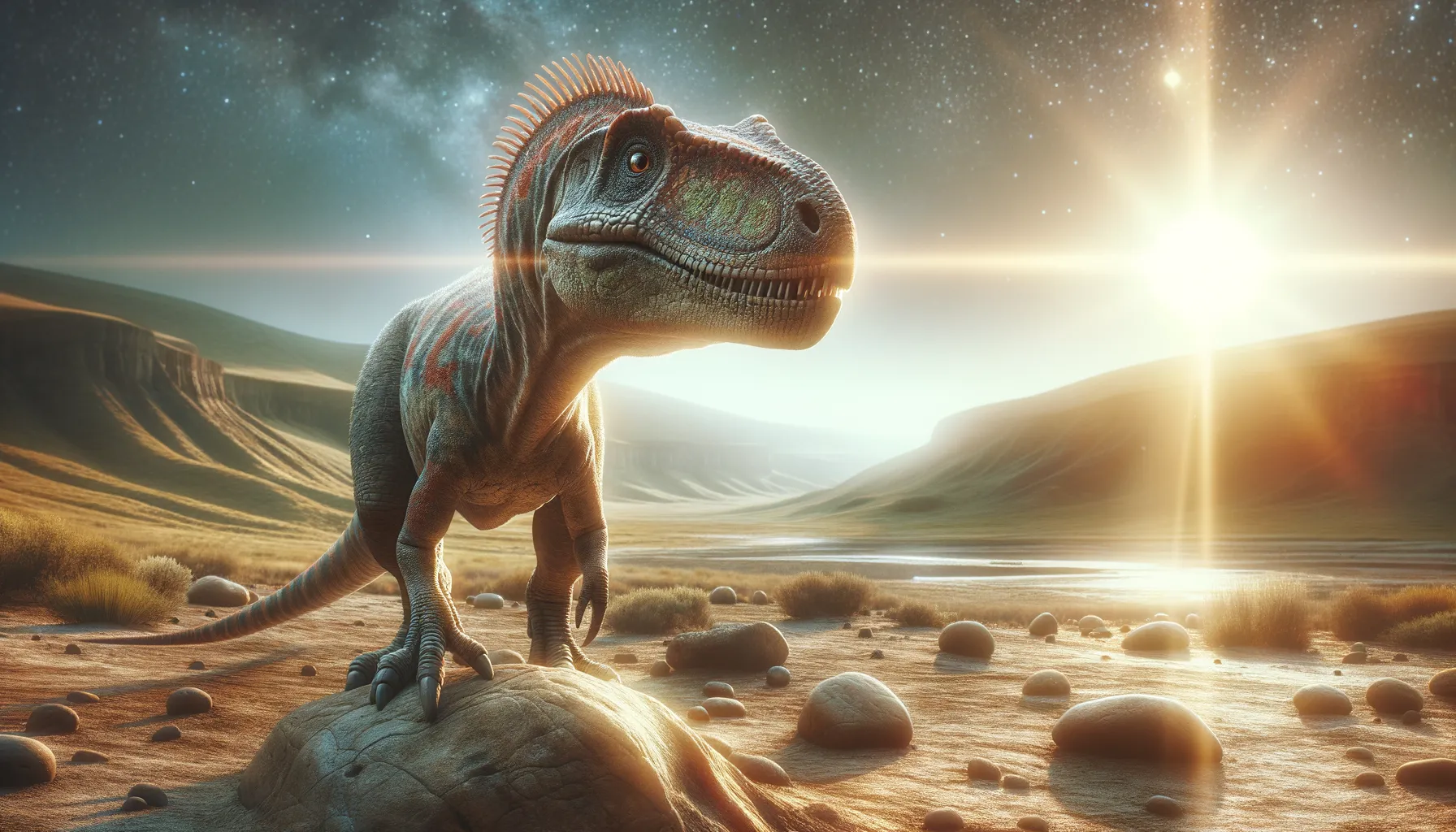
Homalocephale
Silent guardian of the ancient plains.
Period
Cretaceous
Length
About 3 meters (10 feet) long.
Height
Approximately 1 meter (3.3 feet) tall.
Weight
Roughly 90 kilograms (200 pounds).
Homalocephale was a small plant-eating dinosaur recognized for its distinct flat, wedge-shaped skull. Originating from the late Cretaceous period, its fossils have been mainly unearthed in Mongolia. As a pachycephalosaurid, this dinosaur is noted for its relatively short body and considerable head dimensions, believed to have been used in social interactions or combat. Its distinctive physical traits contribute significantly to our understanding of dinosaur behavior and evolution.
Diet
As a herbivore, Homalocephale primarily grazed on low-growing vegetation. Its flat, broad teeth were well-suited for chewing tough plant materials.
Hunting
Being a herbivore, Homalocephale did not hunt other animals. It spent much of its time foraging for plants and possibly fruits that were accessible at ground level.
Environmental challenges
During its time, Homalocephale faced challenges from predators and environmental changes that demanded adaptable survival strategies. Extreme weather patterns or changes in food availability might have posed significant threats. These challenges necessitated migration or changes in habitat usage to secure food sources.
Speed
Slow-moving due to its short legs.
Lifespan
Estimated to live around 10-20 years.
First discovery
First discovered in Mongolia in 1974.
Fun Facts
- Homalocephale was a dinosaur that lived during the Late Cretaceous period, about 80 million years ago.
- It was a small herbivore, meaning it ate plants, and it was about as long as a human is tall, roughly 10 feet.
- Homalocephale had a flat and thick skull, which some scientists think was used during head-butting contests, much like modern-day sheep.
- This dinosaur's name means 'even head', referring to its unique flat skull.
- Fossils of Homalocephale have been found in Mongolia, providing insights into the dinosaur diversity in Asia at that time.
- Despite its small size, Homalocephale had long legs, suggesting it might have been a quick runner.
- Homalocephale is part of a group of dinosaurs known as pachycephalosaurs, which are best known for their thick-skulled dinosaurs.
Growth and Development
Homalocephale grew relatively fast, reaching maturity within a few years. Its unique skull development is believed to be linked to social interactions. The robustness of its body indicates an evolutionary adaptation to its environment, allowing for moderate growth in relation to its feeding and survival needs.
Habitat
Homalocephale lived in a semi-arid environment with scattered vegetation and open plains. This type of habitat allowed it to easily access low-lying plants and shrubs. Seasonal changes may have dictated its movement patterns, seeking out water sources during dry periods.
Interaction with other species
Interacting mostly with plant-eating dinosaurs, Homalocephale likely shared its habitat with other herbivores. Its interactions with carnivorous dinosaurs were likely those of predator and prey. This steered its behavioral trends towards caution and quick response to threats.
Natural lifespan
Homalocephale likely lived for about 10 to 20 years.
Reproduction
Homalocephale likely reproduced by laying eggs in secure, hidden nests. Parental care might have been minimal, with hatchlings being relatively self-sufficient shortly after birth. The reproductive cycle would have coincided with favorable conditions in their environment.
Social behaviour
This dinosaur exhibited social behaviors likely linked to head-butting, a trait used in dominance displays or mating rituals. Group living might have been advantageous for protection against predators. Social interactions were crucial for maintaining societal hierarchies.
Fossil locations
Homalocephale fossils have been primarily found in Mongolia. The sparse and specific nature of fossil discoveries suggests it may have had a limited geographical range. Continued excavations in Asian regions often provide insights into its distribution.
